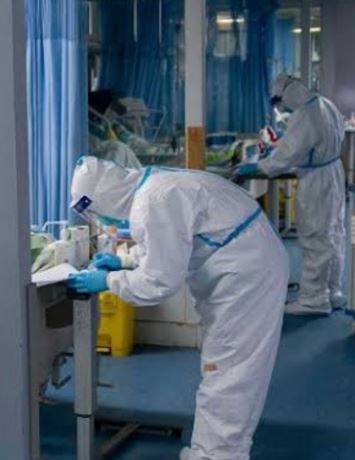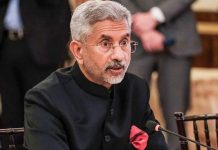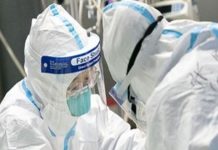 “As soon as the fear approaches near, attack and destroy it.” – Chanakya. Year 2020 brought with it what can only be described as the worst global crisis of the new millennium: Covid-19. The lightning speed of its spread and the lethal trajectory of the pandemic have left the world gasping. The human and economic cost it will extract is something that is yet to be fathomed.
“As soon as the fear approaches near, attack and destroy it.” – Chanakya. Year 2020 brought with it what can only be described as the worst global crisis of the new millennium: Covid-19. The lightning speed of its spread and the lethal trajectory of the pandemic have left the world gasping. The human and economic cost it will extract is something that is yet to be fathomed.
As the nation went into a strategic and defensive huddle, 50 plus young officers of Indian Revenue Service (IT) came together to leverage their combined knowledge, expertise and love for India and find some more solutions, suggestions and options that will help with the treatment for the economic pain that the country is suffering. The volunteering initiative tries to identify actionable areas to mobilize revenue while protecting taxpayers’ welfare.
Addressed to the Chairman and Members of CBDT, the paper, titled “FORCE” – Fiscal Options & Response to Covid-19 Epidemic points out that the greatest economic brunt of Covid-19 will be borne by the
poor and low-income earning segment of our population. Therefore, the government’s primary focus should be on providing income support, especially to the underprivileged segments such as daily wage workers, migrant labourers, and the like.
Taxing the wealthy
A key recommendation of the FORCE is taxing the super rich. As a short term measure for 3-6 months, it has suggested that in times like these, the so called “super rich” have a higher obligation towards ensuring the larger public good. This is for multiple reasons – they enjoy a higher capacity to pay with significantly higher levels of disposable incomes compared with the rest, they have a higher stake in ensuring the economy springs back into action, and their current levels of wealth itself is a product of the social contract between the state and its citizens.
Most high-income earners still have the luxury of working from home, and the wealthy can fall back upon their wealth to cope with the temporary shock. In view of several European economists, taxing the wealthy would be the most “progressive fiscal tool”, as wealth is far more concentrated than income and consumption. A surcharge had recently been raised, and the fact that the additional surcharge was only expected to generate a mere Rs. 2700 crores in additional revenue, this may not be a feasible step in terms of potential revenue impact.
Therefore, this segment of the population can be taxed through two alternative means, both of which can be imposed for a limited, fixed period of time: * raising highest slab rate to 40% for total income levels above a min. threshold of Rs. 1 crore or * re-introduction of the wealth tax for those with net wealth of Rs. 5 crores or more.
Administratively, the former will be simpler to implement. However, the revenue gain associated with both options should be worked out to see whether the gains attached with the latter option score better in terms of a cost-benefit analysis. International taxation.
Surcharge
One suggestion can be to increase the surcharge applicable to the Higher income Foreign Companies having a Branch Office/ Permanent Establishment in India. The said surcharge has not been revised for some time now, and with companies operating in India and deriving profits through their PEs, it is time that a flourishing market like India with its huge prospects flexes its customer-base muscle. Such measures are time-tested, especially in the context of European countries.
Say, for example, that the additional revenue mop-up through either of the above steps is Rs. 50,000 crores. This amount should be placed in a separate kitty, almost like an escrow account. The Government can then identify 5-10 most crucial projects/schemes entailing significant expenditure, which are likely to have a decisive impact on reviving the economy. The costs attached with such projects will be worked out, and these projects should be listed on a Government website, accessible to the entire public. The Government should commit itself to the fact that the additional revenue raised through taxing the wealthy will only and only be utilized for these 5-10 projects/schemes.
People contributed generously to the families of CRPF’s Pulwama terror attack victims, especially because they could see for themselves exactly to whom the amount contributed by them was going to, in a similar live dashboard fashion.
Covid Relief Cess
As opposed to surcharges, cess are more broad-based since they are levied on every taxpayer. Further, they are likely to mobilize more revenue as well. The current rate of cess is 4% (including 2% Health Cess and 2% Education Cess). Thus, an additional one-time cess of 4% on account of Covid Relief (could be called Covid Relief Cess) could help finance capital investment in Covid Relief work.
The extra revenue mobilized on this account could be between Rs. 15000 – 18000 crores. To mitigate the extra hardship on the middle class, the cess may be made applicable only in cases where the taxable income is greater than Rs. 10 lakhs.
It recommends a direct cash transfer of Rs 3,000 to Rs 5,000 a month for the most economically disadvantaged 12 crore households over a period of at least six months. Since MGNREGA holds huge potential, it should be further leveraged.
CSR Funds for Covid relief
The tax incentives for CSR should be extended at the time of National disaster. Those companies who are undertaking the Covid relief activities under CSR should be allowed to claim as expenditure incurred for the purpose of business deduction section 37 for 2020-21 only. This incentive helps in mobilizing CSR funds for the disaster management. The Covid relief activities should be specifically defined under section 2. The amendments in section 2 and section 37 can be considered.
The corporates may be allowed to treat the salaries paid to their non-managerial staff during the COVID crisis as part of their obligation under CSR. While contribution by companies to PM CARES Fund have been included for the purposes of CSR use by companies, there is a need to include the CM Relief Funds for this purpose as well, as requested for by many State Governments. Also, there is a need to incentivize such contributions to tempt companies to invest their CSR funds to PM CARES Fund and CM Relief Funds.
A scheme can be proposed to provide a one-time opportunity to the companies to contribute a portion of their unspent CSR funds till 2019-20 to PM CARES Fund and utilize a portion of such unspent money for their business purpose. The companies should be allowed to transfer a part of these unspent funds to the PM CARES Fund within a prescribed time, say by 30 June 2020, and allow them to release a part of these funds for their business purposes. For example, if a company contributes 75 per cent of its unspent CSR Funds to PM CARES Fund on or before 30 June 2020, the company should be allowed to utilize the remaining 25 per cent of the money for their business purpose immediately after making such contribution.
Deduction to PM CARES Fund and CM Relief Funds to be allowed as deduction u/s 80G over next few years (say, within a span of 3 years) instead of just in 2020-21, at the option of the assessee. This will benefit both the Government and the taxpayers who might not wish to claim the deduction this year due to lesser incomes during the current financial year. A lot of taxpayers may face losses this year or reduced incomes and may wish to avail the option to avail the deduction within the next two years, when they have higher incomes. This will benefit the government as well as the revenue foregone due to tax deduction will be deferred to the future as well. b) Extension of benefit of deduction under Section 80G to Companies paying taxes under the new regime of lower tax rates: A number of companies may be opting for the new tax regime of lower tax rates. They would not be inclined to contribute funds to the PM CARES Fund as they are currently not eligible to avail tax deductions on contributions made against the income in 2020-21.
Medium term measures
As medium term measures for 9-12 months, it suggests that there is a need to raise government revenues in the medium to long term through various means to meet the greater spending requirements to revive the economy.
Most of the tax enforcement mechanism is based on the theory of penal deterrence. Considering the genuine hardships faced by the tax payers during this global crisis, compliance can in itself be 14 projected as a positive action for relief. It is proposed that there should be tax discounts and rebates in percentage points for timely compliances.
The paper also makes a slew of recommendations to boost the MSME sector, which, it argues, is bound to be the worst-hit by the crisis. These include a tax moratorium for MSMEs whose total tax liability is less than Rs 5 crore-10 for one year.
One recommendation suggests increase in the tax on online companies such as Netflix, Amazon Prime and Zoom, among others, under the equalisation levy or “Google Tax” can be increased from 6 per cent to 7 per cent for their advertisemnt services, and from 2 per cent to 3 per cent for e-commerce work.
SME sector
Among corporates, the small and medium enterprises segment (SME) would be the hardest hit. This sector is also important from the perspective of job creation and retention of existing jobs in this period.
Accordingly, there should be an attempt to identify creative ways to mobilize additional tax and non-tax revenue, without in any way burdening the taxpayers. Thus, India needs to be prepared for rebound and that means that India should focus on temporary job creations especially in local areas.
Health care sector
Another recommendation is that the government should ensure the health sector serves as the driving force for economic growth for the next year or so. For this there should be a tax holiday for three years for healthcare sector. This must incorporate manufacturing of pharmaceuticals, medical grade masks, gloves, gowns, ventilators, testing labs, construction contractors involved in building of hospitals and primary health centers, etc.













